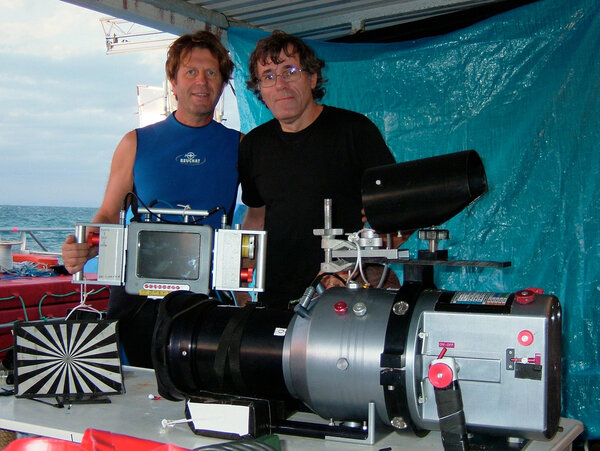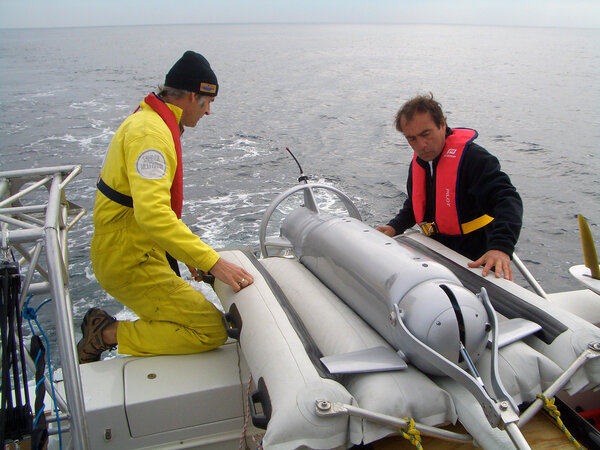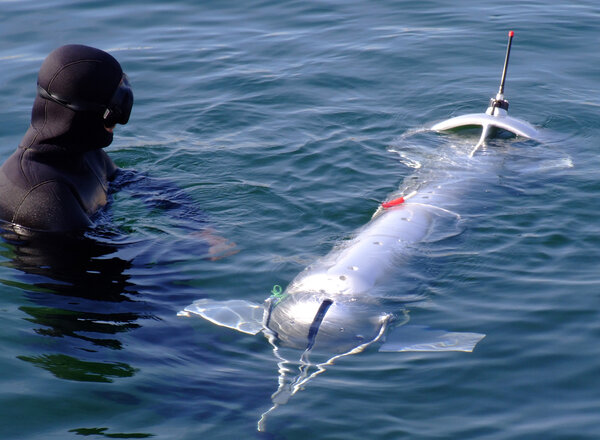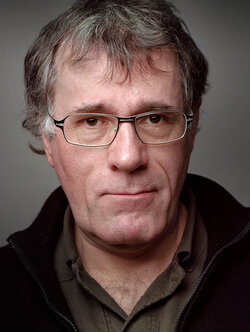Going even further... or even deeper with Jacques Perrin
By Philippe Ros, AFCMake no mistake, this question was not just put to me but to a whole team that Olli Barbé and I had brought together : Laurent Desbruères, the colorist, the whole Digimage team, the Panavision’s one, and François Paturel who supervised the DITs. This notion of teamwork was almost an ideological foundation on which Jacques Perrin, Jacques Cluzaud, the second director, and Olli, relied.
If the question refers to limits to overcome or territories to be discovered, it is because the notion of artistic and technical research was, for Jacques, intimately linked to that of a deep desire to move forward in order to create new images, to explore new feelings to share with the spectators.
My work with Jacques Perrin perfectly illustrates the cinematographer’s axiom, which is to put into images what the director has imagined. All cinematographers know that this transformation of this imagination involves deep listening and that, on most films, preproduction does not always provide for this precious time for discussion.
At Galatée, the notion of preparation is completely different from what we are familiar with in French film production : the concepts of time, reflection, discussions, meetings, and changing one’s point of view are constantly being promoted.
In my own case, I was at first supposed to spend three months in preproduction, which became six months, and then, finally, a year. Each time I saw Jacques looking at the screentests we were rather proud to present to him, he’d say : “It’s good, it’s good, but... could we go... further ?”.
When, at the end of the preparation, I said to Jacques : “That’s everything ready to shoot,” he replied : “Wait, could we shoot a sequence shot 1,700 meters underwater inside of the Lucky Strike hydrothermal source in the Azores ?”
This wasn’t further but… deeper.
Too deep unfortunately… after three months of work, we had to give up due to a lack of available diving chambers, much to his disappointment.

This was followed by nearly five years of extra work I put into supervising the film / digital mixing, managing underwater shoots, the fabrication of a torpedo, and, finally, before postproduction, several sequence shots following plankton and finally a long traveling shot with camera rotation around a lobster egg inside of a water droplet : starting at 0.5mm and ending at 20 microns.
I hadn’t expected “Can we go even further…” to become “…into the infinitely small ?”


This is why the first memory that came to mind when writing a testimonial on Jacques Perrin was mentioned, is the wonderful journey that the entire crew experienced, without forgetting the very many meetings around a conference table... and several tables in very good restaurants. Conviviality was taken to the extreme : mornings often ended with a coffee hour, and evenings often ended with one last drink. I even strongly suspect that Jacques would ask us to push things even further once he felt that our fears or our false technical barriers had been sufficiently weakened by the quality of the food and wine...
Thus, I will never forget the evening when, after an excellent 2004 Ruffino Chianti Riserva, Jacques asked me whether I thought it would be possible for me to take a circular traveling shot around a seahorse mating ritual.
I’ll admit that I drew a real blank because my knowledge, at the time, of this species’ customs was particularly limited, if not inexistant. I of course said yes and, back home, a quick search revealed that the size of the species Jacques had chosen was 7-9 cm. A rough night followed during the little underwater horses clearly won the day.
This circular tracking shot was performed following screentests at LoumaSystems. Many thanks to Jean-Marie Lavalou for his recommendation of a very good Australian key grip for the telescopic crane, because it was the only tool that we used on this shoot in Queensland in a small square basin of water measuring 1.80 meters on each side, and only 25cm deep.
When I called Geoff Brown, the stage manager, to tell him that we were going to have rather short actors, he tried to reassure me by referencing a film he had made with children. Then, he was stunned into silence when I told him exactly how small these individuals were.
But there was a compromise, we didn’t do a 360° circular traveling shot but only a 270° one because we had to provide space for the lighting. There was possibility of overhead lighting, as the submerged Innovision probe at the end of the Technocrane’s camera and the telescopic arm were occupying this space. This probe required T22 aperture and therefore we had calculated that we needed 120kW of light in this small, 150-square-meter lab and therefore had to anticipate the presence of a heavy-duty cooling system.
The reason I’m quoting this avalanche of data is to provide an idea of the larger-than-life scale of all of Jacques Perrin’s projects. But also to underscore the involvement of all of the branches of our profession, one after the other, who each realize they’re going to have to go much further than they’d thought.
This domino effect was very accurately described to me by Michel Benjamin, AFC, who introduced me to Jacques Cluzaud, for which I cannot thank him enough.
All the directors of photography were : Luc Drion, SBC, Christophe Pottier, Laurent Fleutot, Laurent Charbonnier and for the underwater part : Didier Noirot and René Heuzey to name but a few, all found themselves faced with this request from Jacques to excel. And you only have to watch Galatée’s films to understand what the technical crews had to do and how they were able to find practical solutions to all these incredible demands.
All the companies that took part in this work, from Panavision to Sony, Arri, HD Systems, Angénieux, Transvidéo, Zeiss, all felt they’d taken part in an unprecedented cinematographic project. This wasn’t just the case on Océans, but also to many other films such as The Monkey Folk, Microcosmos, Winged Migration, Seasons…
Jacques always showed such respect for his crews that he could dare to make such outrageous demands.
The reason he was so convincing in all of these meetings is because his desire as a director and his wonder for nature made him want to pursue his dreams to the end.
In Jacques Perrin’s technical research, what was at stake, wasn’t the dominance of a technical vision, but rather that of a desire to create.
And it was enough to see Jacques’ eyes gleam when leaving the screening room to say that, perhaps, we had gone... far enough.
(Translated from French by A. Baron-Raiffe)
 En
En Fr
Fr







